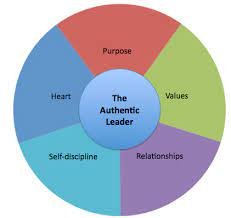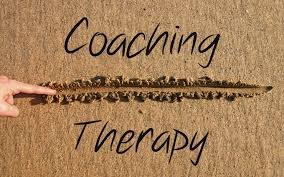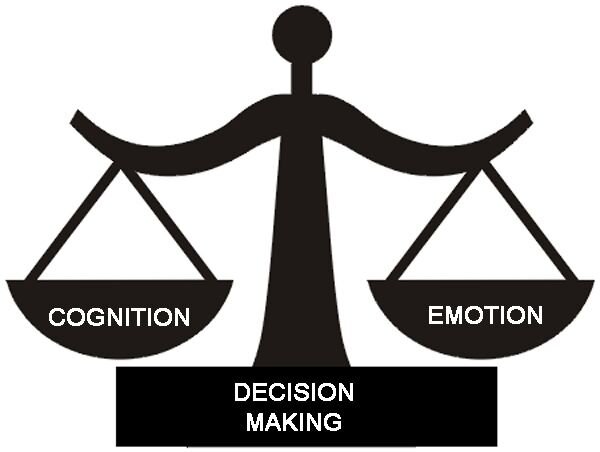Navigating life is not without its challenges. There are times when we need help to accelerate our progress. Former President Barack Obama reminds us, “Don’t be afraid to ask for help when you need it. I do that every day. Asking for help isn’t a sign of weakness; it’s a sign of strength. It shows you have the courage to admit when you don’t know something, and to learn something new.” If you feel stuck in some part of your life or just navigating a tricky situation, partnering with an ally could be just the thing that helps you breakthrough.
This series will explore four common sources of life and career assistance and the differences between each. The first blog will cover support offered by therapists and coaches, and the second will review mentors and sponsors. While they all have commonalities in helping you go after something you want in life, each has its particular focus, which may relate to what you need at the time.
Therapy
As a coach, I am often asked about the difference between coaching and therapy and while I am not a therapist, in putting together this information, I have conducted research and spoken to various therapists to learn more. Here is my coach's perspective.
While there are many different kinds of therapists and specialties, I’ll focus on a general description. A therapist, or trained mental health professional, must have a license to treat mental health and focus on emotional healing. They can lead you out of a type of dysfunction that is getting in your way of operating soundly on a day-to-day basis. Most people go to a therapist because of a presenting problem, such as a panic attack or crushing anxiety that makes them less effective on the job and in their lives.
We all have a past, and sometimes previous unaddressed emotional issues and key experiences have framed who we are today. Therapists can help examine your history and seek to undo unhelpful thoughts or process trauma so you can move forward. You may discover that you had an interaction with a teacher early on that made you feel ashamed, and even though it has been decades, you play that record in your mind like it just happened and haven’t shared that struggle with anybody else. Carl Jung said that secrets are psychic poison; we can better heal by processing repressed experiences. Therapists explore any family links that may have had a more significant impact on you that you never gave credit to, but it sits in your subconscious and settles as nerves in your body. Maybe your parents told you that you were never good enough, or not as good as your sibling, and it is connected to the lack of confidence you are now exhibiting, which prevents you from going after a promotion. Maybe you only received love from your family when you were achieving something, so you have some self-limiting behavior of burying your head in work to produce results rather than collaborating with your teammates because you find the former to be a more valuable method to prove your worth to your boss, it’s your conditioning from when you were young. A therapist can help you navigate those emotions and illuminate the present better to move forward.
The goal of therapy is to release any places where you are blocked to be happier, more settled, and at peace. At its core, it works on the psychological problems from its source and does healing work, sometimes spanning an extended period. Tiffany Louise, Social Worker and Professional Coach says, “People generally seek therapy because they are feeling blocked, experiencing maladaptive emotional and behavioral health symptoms, and are otherwise not functioning optimally in their lives.” This trauma can cause people not to follow through with agreements or assignments and be resistant and stay stuck. Therapists can help you develop coping mechanisms so you do not get derailed in your day by the incessant ups and downs that can create imbalance.
There are also times when we are experiencing complex life events and are overwhelmed and have a crushing worry that consumes us, so we need to talk about it to process and heal. In a comment to the Huffington Post, David Spiegel, Associate Chair of Psychiatry and Behavioral Sciences at Stanford University said "We're social creatures, fundamentally, so talking to people can be a real source of support, and therapy can be an interpersonal laboratory. It's a way of working with cognition, emotion, and interpersonal relationships in a way that helps you manage your emotions and learn to see it from a different perspective." In other words, you do not have to go through a huge life transition or trauma to benefit from therapy. Talking with a professional allows you to get a sense of how you appear to other people, helps you get feedback on whatever you're feeling, and offers insight into how those emotions are affecting your everyday life.
When should you seek a therapist?
You can work with a therapist when you want to gain emotional healing from your upbringing, past trauma, or need assistance with an overwhelming situation. When there are consistent interruptions to your functioning, maybe you feel chronic anxiety or stressed-induced pains, have trouble sleeping, experience changes in appetite, or feel depressed, you can get support. In general, humans are not meant to keep things inside, and therapy can help us in all sorts of ways and can be whatever we want it to be.
Coaching
Coaching is a creative alliance designed to help people move forward in their personal and professional lives and be the best. A coach helps you define what you want to achieve, strategize how to get there, and support you as you take action to achieve extraordinary and sustainable results.
Coaching helps you clarify who you are, who you want to be, and dedicate time to inner work and reflection. As a Leadership Development and Executive Coach, I have helped clients define their purpose and rediscover their passions to have great fulfillment and meaning. Some of my clients feel like they have a lot to be grateful for, yet something is still missing; they need that extra processing with a trained coach who can help them piece the puzzle together. I’ve helped clients create a vision for their lives, so they know that when they take steps, they are meaningful ones because they are in the direction of their worthy goals. Together, we explore their values or enduring beliefs that guide all their decisions and set goals aligning with their purpose, vision, and values. When life feels complex, knowing these crucial elements can serve as a steady and reassuring guide, steering us through the mayhem.
Coaches work with people who feel like their lives are on autopilot and they want to challenge themselves or break out of their comfort zones and stretch to play bigger. They want to tap their inner motivation for a major goal, such as being promoted to senior leadership. A coach offers tremendous accountability for others to get what they want out of life. Just recently, I was working with a senior leader who aimed to be a Vice President. When I asked her what she needed to do to get ready for that position, she was grateful for the question because she never thought about it methodically so she made a list and created a roadmap. Asking her about what her leadership needed to see from her expanded her viewpoint beyond her perspective and created even more nuance to her plan. Coaching is about helping others discover their dreams and uncover the motivation to go after them deliberately.
If you feel confused about the next chapter in your life (i.e., struggling with career decisions, major life choices) and would like guidance on what would best serve you, coaches can help. If your thoughts represent puzzle pieces, coaches help to take them out of your mind and place them on the table so you can see the map to explore the territory better. Coaching is not about focusing on what’s wrong, but on what’s possible so you can get more out of your life and live from a point of choice and fulfillment.
As an Executive Coach, I work with others to improve their mindset and skillset to accelerate their career and have a bigger leadership impact. Common topics I’ve covered with leaders include communication (how to speak with executive presence, how to give and receive meaningful feedback, how to advocate for yourself and negotiate effectively, how to have courageous conversations, how to listen to understand and not reply), how to delegate for results, run meetings, prioritize, plan, organize, have work-life flow, make better decisions, be a strategic thinker, among others I’ve also helped leaders run high-performing teams by creating agreements, defining mission, vision, and values, putting in place systems and processes for peak performance and having productive conflict. I help leaders discover their philosophy and principles that will guide their actions, know their strengths, and plan to address their weaknesses or find workarounds. I also do a lot of work around career coaching by helping clients do the work to get clear on what they want in their next role; I help them create their leadership branding and their narrative so they can speak about themselves profoundly. Sure, we cover tactical aspects like updating their resume and LinkedIn, but I assist them in being strategic about their outreach so they know whom they want to contact to connect with and what they want to say to maximize their time in a win-win fashion so it is an energy-building experience.
Through coaching, I help clients be better learners, raise their self-awareness, and potentially have mindset shifts to upgrade their human operating system. We explore blocks such as nasty messages from their inner critics that keep them from their best life or limiting beliefs and derailing habits that do not serve them, so we replace them with productive alternatives. A coach helps you remove unnecessary obstacles and barriers that you have created for yourself to move forward. We work on improving your confidence and self-esteem and overcoming feelings of self-doubt by revisiting old scripts and updating them. Similar to the sport of curling, we are clearing the path so the client can direct their stone where it needs to be, although the difference is that he client does the work. A coach helps clients discover their blind spots because it is hard to see the spinach in our teeth and it is nice when a trusted advocate kindly draws our attention to something that would be helpful to know. When emotions are strong, we need someone else to see how we think. Neuroscientists call these disruptors. We need people to interrupt our thinking patterns to prompt us to stop and to look at them differently, somebody to help us revisit and expand our stories. Big shifts can happen when somebody else reflects your beliefs to you to see how they serve you and what you want to do about them.
How does the coach operate?
Many sessions begin with a goal or topic to explore and end with action steps and accountability, but it all depends on the client’s needs. It usually includes asking empowering questions to connect people to their passion and purpose, raising awareness of their inner blocks, challenging their thinking, and discovering new viewpoints and possibilities. As a certified leadership coach and thought partner, I’m trained to listen and reflect deeply, always asking more of them than they ask of themselves. I reflect to them what I hear but slightly shifted language. I hold space for others to process what they really think and feel because we do not often create reflection time for ourselves. They have a container to utter unformed thoughts to a coach dedicated to helping them make discoveries to fuel their growth. I also use a lot of frameworks so clients can have set models to work from.
When should you seek a coach:
If you need a skilled thought partner to help you advance on your personal and professional short and long-term goals and you want to be held accountable for projects that you are pursuing, a coach can help. If you are eager to rise in your career and navigate all the pieces involved in the process, a coach can help.
Therapy and coaching are two ways that can help support your growth for greater understanding. While therapy tends to focus more on the past and working out previous experiences, coaches dip into the past but are mainly interested in how it informs the present and uses that information to guide them to their destination. With that being said, many therapists are coach-like, they see clients as naturally creative, resourceful, and whole, and they work on goals to deepen the learning and forward the action. There are also many coaches who are not afraid to explore the client’s full context, including how the past has influenced their current outlook and actions and how they may want to address the wounds. While the brain is a marvelous complicated mess, and sometimes the lines can be blurred, we need different things at different times.
Q: Who do you go to when you need help? How do you see working with either a therapist or a coach supporting your goals? Comment and share below; we would love to hear from you!
Quote of the day: “Your vision will become clear only when you can look into your own heart. Who looks outside, dreams, who looks inside, awakes.” -Carl Jung, psychiatrist.
[The next blog in this series 2/2 will focus on two other supports – mentors and sponsors]
As a Leadership and Executive Coach, I partner with others to help you achieve your goals, contact me to learn more.













